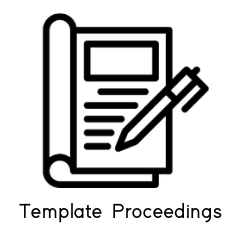Preliminary Potential and Characteristics Study of Microalgae from Intensive Shrimp Pond in North Aceh District as Renewable Energy
DOI:
https://doi.org/10.29103/micoms.v3i.192Keywords:
biofuels, microalgae, north aceh, renewable energy, shrimp pondsAbstract
Microalgae are organisms that have many variations of species that are very suitable to be developed in all Indonesian waters for use as food, medicine, and biofuels. The method used in this research is a survey method, which is a descriptive study to describe/describe the nature of a phenomenon/condition that existed at the actual time and examine the causes of certain symptoms. The stages of this research include determining the location of the research, data collection techniques, and data analysis of the results of the studies that have been carried out. The data analysis in question was in the form of statistical analysis to compare the proximate content in the form of lipids, starch, and sucrose from microalgae from each sampling location. Correlation tests were also carried out between water nutrient variables, the dominance of microalgae species, and the proximate content of microalgae when sampling was carried out. The results showed that the microalgae species that grew and dominated the media included Skeletonema, Chaetoceros, Diatomae, and Chlorella.
References
Y. Chisti, Biodiesel from microalgae. Biotechnology Advances, 2007, 25(3), 294–306. https://doi.org/10.1016/j.biotechadv.2007.02.001.
S. Sriamini, R. Susilowati, Biodiesel production from microalgae Botryococcus braunii. Squalen Bulletin of Marine and Fisheries Postharvest and Biotechnology, 2010, 5(1), 23. https://doi.org/10.15578/squalen.v5i1.43.
Y. Gao, C. Gregor, Y. Liang, D. Tang, C. Tweed, Algae biodiesel - a feasibility report. Chemistry Central Journal, 2012, 6(S1), S1. https://doi.org/10.1186/1752-153x-6-s1-s1.
L. Assadad, B.S.B. Utomo, R.N. Sari, Pemanfaatan mikroalga sebagai bahan baku bioetanol. Squalen, 2010, 5(2), 51–58.
Hadiyanto, S.I.C. Andri, Produksi Mikroalga berbiomasa tinggi dalam bioreaktor open pond. Prosiding Seminar Nasional Teknik Kimia "Kejuangan" Pengembangan Teknologi Kimia Untuk Pengelohan Sumber Daya Alam Indonesia, 2010, pp 1–6. http://repository.upnyk.ac.id/538/1/5.pdf.
K. Khotimah, Membangun ketahanan energi pendukung pertahanan maritim melalui pemanfaatan mikroalga sebagai biodiesel bagi masyarakat pesisir. Jurnal Pertahanan & Bela Negara, 2018, 8(1), 67–84. https://doi.org/10.33172/jpbh.v8i1.266.
V. Bhola, F. Swalaha, K.R. Ranjith, M. Singh, F. Bux, Overview of the potential of microalgae for CO2 sequestration. International Journal of Environmental Science and Technology, 2014, 11(7), 2103–2118. https://doi.org/10.1007/s13762-013-0487-6.
M.J. Raeesossadati, H. Ahmadzadeh, M.P. McHenry, N.R. Moheimani, CO2 bioremediation by microalgae in photobioreactors: impacts of biomass and CO2 concentrations, light, and temperature. Algal Research, 2014, 6(PA), 78–85. https://doi.org/10.1016/j.algal.2014.09.007.
D. Ismail, Utilization of chlorella vulgaris to fixate a high concentration of carbon dioxide in a compost-based medium. International Journal of Technology, 2016, 7(1), 168–175. https://doi.org/10.14716/ijtech.v7i1.2041.
R. Pourjamshidian, H. Abolghasemi, M. Esmaili, H.D. Amrei, M. Parsa, S. Rezaei, Carbon dioxide biofixation by Chlorella sp. In a bubble column reactor at different flow rates and CO2 concentrations. Brazilian Journal of Chemical Engineering, 2019, 36(2), 639–645. https://doi.org/10.1590/0104-6632.20190362s20180151.
G. De Bhowmick, L. Koduru, R. Sen, Metabolic pathway engineering towards enhancing microalgal lipid biosynthesis for biofuel application - A review. Renewable and Sustainable Energy Reviews, 2015, 50, 1239–1253. https://doi.org/10.1016/j.rser.2015.04.131.
P.K. Sharma, M. Saharia, R. Srivstava, S. Kumar, L. Sahoo, Tailoring microalgae for efficient biofuel production. Frontiers in Marine Science, 2018, 5(Nov), 1–19. https://doi.org/10.3389/fmars.2018.00382.
M.Z. Htet, Y. Lim, S. Ling, Y. Hui, O. Rajee, Biofuel from Microalgae-a Review on the Current Status and Future Trends. International Journal of Advanced Biotechnology and Research, 2013, 4(3), 329–341. http://www.bipublication.com.
S.O. Gultom, Mikroalga: sumber energi terbarukan masa depan. Jurnal Kelautan: Indonesian Journal of Marine Science and Technology, 2018, 11(1), 95. https://doi.org/10.21107/jk.v11i1.3802.
K. Vaňa, Ľ. Černá, Faculty of Materials Science and Technology in Trnava of the Marketing Plan, 2012, 20(1), 131–136.
I. Zainun, S. Budidarsono, Y. Rinaldi, M.C. Adek, Socio-Economic aspects of brackish water aquaculture (tambak) production in Nanggroe Aceh Darussalam. World Agroforestry Centre, 2007, 71 pages.
A.N. Sari, S. Hutabarat, P. Soedarsono, Struktur komunitas plankton pada Padang Lamun di Pantai Pulau Panjang, Jepara. Diponegoro Journal of Maquares, Management of Aquatic Resources, 2014, 3(2): 82-91.
N. Febrinawati, B. Putri, S. Hudaibah, Pemanfaatan limbah budidaya udang vaname (Litopenaeus vannamei) sebagai media kultur Chaetoceros amami. Jurnal Perikanan, 2020, 10(1): 20-28. doi: https://doi.org/10.29303/jp.v10i1.199.
R. Ahdiaty, D. Fitriana, Pengambilan sampel air sungai gajah wong di Wilayah Kota Yogyakarta. IJCA (Indonesian Journal of Chemical Analysis), 2020, 3(2), 65–73. https://doi.org/10.20885/ijca.vol3.iss2.art4.
APHA (American Public Health Association), Standard method for the examination of water and wastewater. American Public Health Association. Water Pollution Control Federation. Port City Press. Baltimore, Maryland. 1992, 1202 pages.
E.P. Odum, Dasar-dasar ekologi, edisi ketiga. Gajah Mada University Press, 1993, Jogjakarta, pp 134-162.
L. Botes, Phytoplankton identification catalogue. Saldanha Bay, South Afrika, 2001.
M. Ciocum, L. Ionescu, Phytoplankton and zooplankton identification and their productivity process from the Therapeutically Saline Lakes – Lacu Sarat Bralia and Bazna, Sibiu- Romania. National Insitute of Rehabilitation Medicine and Balneoclimatology-Bucharest, Str. Sf. Dumitro nr. 2. Sektor 3: Romania, 2005.
BSN. Cara uji makanan dan minuman. SNI 01-2891-1992. In SNI (p. Jakarta (ID): BSN), 1992.
Utojo, A. Mustafa, Struktur komunitas plankton pada tambak intensif dan tradisional Kabupaten Probolinggo, Provinsi Jawa Timur. Jurnal Ilmu dan Teknologi Kelautan Tropis, 2016, 8(1): 269-288.
G.M. Samadan, Supyan, R. Andriani, Juharni, Kelimpahan plankton pada budidaya udang vaname (Litopenaeus vannamei) dengan kepadatan berbeda di tambak lahan pasir. Jurnal Ilmu Kelautan dan Kepulauan. 2020, 3(2): 222-229. https://doi.org/10.33387/jikk.v3i2.2588
SNI. Produksi udang vaname (Litopenaeus vannamei Boone, 1931) intensif di tambak lining. Badan Standardisasi Nasional. 8008:2014. ICS 65.150. 2014, pp 15.
I. Rusdy, Nurfadillah, D.H.M. Harahap, Kualitas air pada budidaya udang vaname (Litopenaeus vannamei) sistem bioflok dengan padat penebaran tinggi di Alue Naga Kota Banda Aceh. Jurnal Kelautan dan Perikanan Indonesia, 2021, 1(3): 104-114.
M. Amin, A. Mansyur, Keragaman plankton pada budidaya udang vaname (Litopenaeus vannamei) pola semi-intensif dengan pergiliran pakan protein berbeda. Prosiding Indoaqua - Forum Inovasi Teknologi Akuakultur, 2012, pp 495-501.
J. Haryadi, Hadianto, Korelasi nutrien terlarut dengan struktur komunitas plankton di tambak mangrove Blanakan, Kab. Subang. Jurnal Pengelolaan Sumberdaya Alam dan Lingkungan, 2012, 2(2): 73-84.
Downloads
Published
Issue
Section
License
Copyright (c) 2022 Prama Hartami, Eva Ayuzar, Munawar Khalil, Muhammad Hatta, Aulia Utari, Rahayu

This work is licensed under a Creative Commons Attribution-ShareAlike 4.0 International License.
COPYRIGHT NOTICE
Authors retain copyright and grant the journal right of first publication and this work is licensed under a Creative Commons Attribution-ShareAlike 4.0 that allows others to share the work with an acknowledgment of the work's authorship and initial publication in this journal.
All articles in this journal may be disseminated by listing valid sources and the title of the article should not be omitted. The content of the article is liable to the author.
Authors are able to enter into separate, additional contractual arrangements for the non-exclusive distribution of the journal's published version of the work (e.g., post it to an institutional repository or publish it in a book), with an acknowledgment of its initial publication in this journal.
Authors are permitted and encouraged to post their work online (e.g., in institutional repositories or on their website) prior to and during the submission process, as it can lead to productive exchanges, as well as earlier and greater citation of published work.
In the dissemination of articles, the author must declare https://proceedings.unimal.ac.id/micoms/index as the first party to publish the article.






